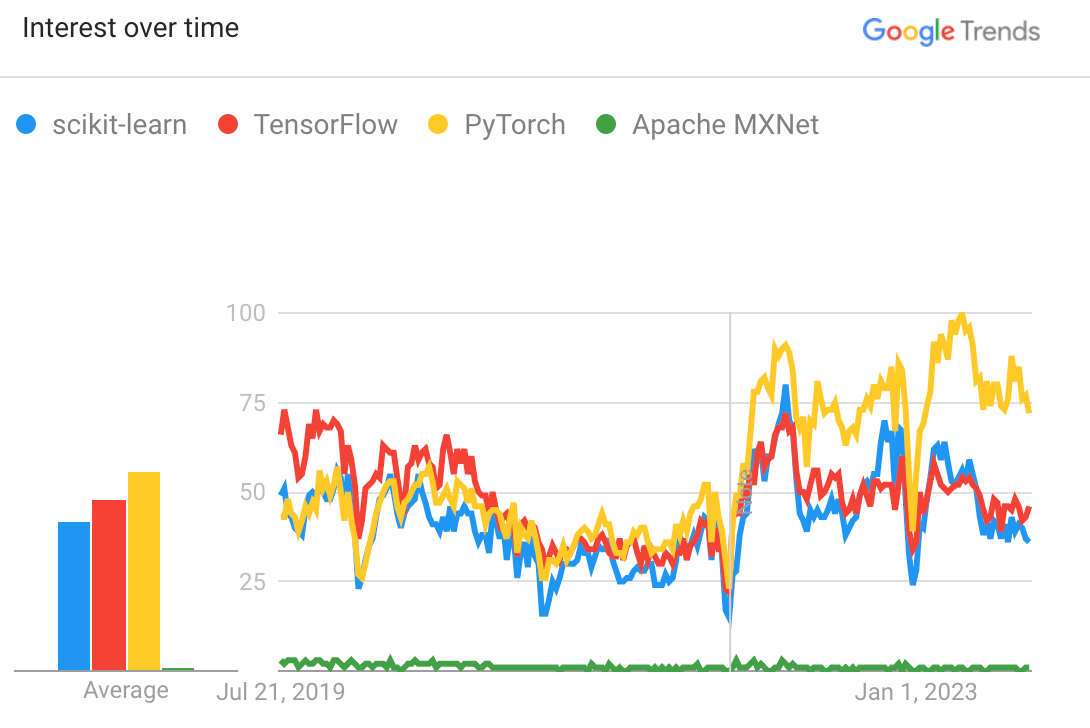Machine learning libraries Python
Python has become one of the most popular programming languages for machine learning due to its simplicity and versatility. There are many excellent Python libraries for machine learning tasks like data preprocessing, model training, model evaluation, and more. In this post, we will highlight 5 of the most popular and useful Python libraries for machine learning.

1. Scikit-Learn
Scikit-Learn is arguably the most widely used and versatile machine learning library for Python. It provides simple and efficient tools for various tasks like classification, regression, clustering, dimensionality reduction, model selection, and preprocessing. Some of the key features of Scikit-Learn include:
- Simple and consistent interface for different machine learning algorithms like SVMs, random forests, k-means, etc.
- Powerful utilities for tasks like cross-validation, hyperparameter tuning, pipeline building, etc.
- Excellent documentation and examples which make it easy for beginners to learn.
Overall, Scikit-Learn is a great choice for machine learning with Python due to its simplicity, efficiency, and extensive capabilities.
2. TensorFlow
TensorFlow is Google's popular open-source library for deep learning and neural networks. It uses data flow graphs to build models and provides automatic differentiation capabilities for optimizing complex neural network architectures. Some key features of TensorFlow include:
- Support for building and training deep neural networks with multiple layers and activation functions.
- Powerful GPU acceleration makes training complex models faster.
- Integration with other Python libraries like NumPy, Scikit-Learn, Matplotlib, etc.
- Visualization and debugging tools for understanding neural network graphs and performance.
TensorFlow is a great choice if you need to build deep learning models like convolutional and recurrent neural networks.
3. PyTorch
PyTorch is Facebook's open-source library mainly used for deep learning research and applications. Like TensorFlow, it also provides tools for building and training neural networks but follows more of a Pythonic approach. Some key features of PyTorch:
- Dynamic computational graphs which are more intuitive than static graphs.
- Strong GPU acceleration similar to TensorFlow.
- Built-in support for neural network layers, loss functions, and optimizers.
- Integrates well with Python for a more Pythonic programming style.
PyTorch is gaining popularity due to its ease of use and flexibility for deep learning research.
4. Keras
Keras is a high-level neural networks API running on top of TensorFlow, CNTK, or Theano. It provides an easy way to build common neural network architectures like convolutional and recurrent nets. Some key aspects of Keras include:
- User-friendly API for quickly building common deep learning models.
- Supports both TensorFlow and Theano backends.
- Pre-trained models for computer vision, text, and time series.
- Easy model serialization for saving and loading models.
Keras is a great choice for quickly building and prototyping neural networks, even for beginners.
5. Pandas
Pandas is one of the most popular Python libraries for data manipulation and analysis. Though not specific to machine learning, it is invariably used in most machine learning workflows for tasks like:
- Flexible data structures like DataFrames for storing tabular data.
- Intuitive data manipulation capabilities for cleaning, munging, slicing, dicing data.
- Built-in functions for data analysis tasks like aggregation, merging, sorting, etc.
- Simple handling of common data formats like CSV, Excel, JSON, SQL databases, etc.
Pandas makes it much easier to handle data preprocessing and exploration for machine learning in Python.
Other useful Python libraries for machine learning:
XGBoost: Optimized gradient boosting library known for its speed and performance. Useful for tasks like regression, classification and ranking.
LightGBM: Another gradient boosting framework focused on being lightweight and fast. Good for large datasets and histograms.
CatBoost: Gradient boosting from Yandex research focused on categorical features. Handles high-cardinality categorical data well.
Eli5: A library for explaining and interpreting machine learning models like scikit-learn. Useful for model introspection and debugging.
SHAP: A unified approach to explain machine learning models and their predictions. Creates summary plots to explain models.
Optuna: An hyperparameter optimization framework for automating and accelerating hyperparamter tuning.
Ludwig: Uber's open source framework which makes it easy to train and test deep learning models without coding.
Gensim: For topic modeling and text vectorization techniques like LSA, LDA, word2vec etc.
FastAI: A higher-level wrapper built on top of PyTorch for rapid neural net development.
Spark MLlib: Spark's scalable machine learning library including algorithms like classification, regression, clustering, etc.
There are many other useful niche libraries but these are some of the less popular but powerful ones to check out. The Python ecosystem has a library for practically every machine learning need imaginable!
Summary
There are many excellent Python libraries for different aspects of machine learning. Scikit-Learn provides a simple consistent interface to many common ML algorithms. TensorFlow and PyTorch are popular for building and training deep neural networks. Keras provides a user-friendly API for rapid neural network construction. And Pandas is almost essential for practical data handling and analysis. These libraries combined make Python one of the best programming languages for machine learning today.
Hope this gives you an overview of the most popular and useful Python libraries for machine learning! Let me know if you have any other favorites that I should check out.